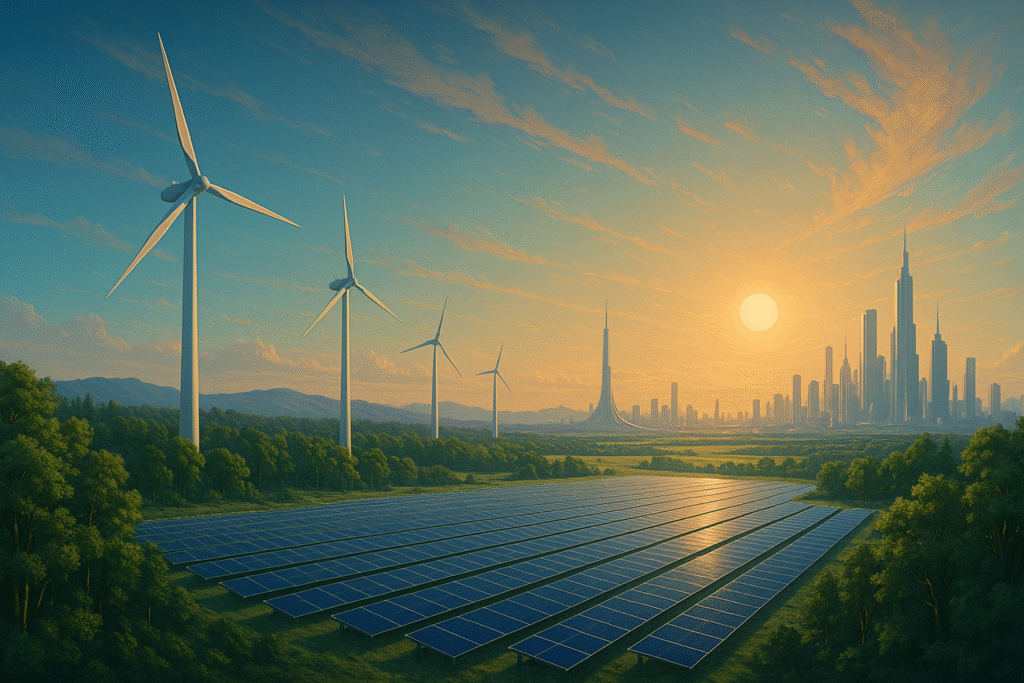For 10,000 years, civilization has followed the same pattern: burn something to survive.
Wood, coal, oil, gas—all variations of the same story. Dig, burn, repeat. Entire economies built on combustion. Every year, we extract 15 billion tonnes of fossil fuels just to set them on fire. Use once. Gone forever.
Now, for the first time in human history, we have a way out.
The Myth: “Clean Energy Is Still Extractive”
Note: This piece builds on ideas first explored in False Equivalency: The Material Extraction Debate in the Energy Transformation, which dives into the numbers behind extraction myths. If you haven’t read it yet, it’s a perfect companion.
A common critique of renewables and EVs is that they simply shift the burden of extraction. New roads. New mines. New demand. The same old system, just rebranded.
But this is a fundamental misunderstanding.
The Truth: One-Time Build vs. Eternal Burn
Clean energy is a transitional system, not an extractive one. Yes, it starts with mining—we need lithium, copper, rare earths. And yes, the transition to a 100% renewable world will require around 25–30 million tonnes of minerals. But that’s still a drop in the ocean compared to the 15 billion tonnes of fossil fuels we extract every year to keep the old fire burning. Here’s the difference:
- EVs with LFP batteries can last over 1 million miles.
- Batteries are recycled at 95%+ recovery rates, like at Tesla’s Nevada facility, which reclaims 92% of battery materials.
- Wind turbines run for 25–30 years, often repowered rather than rebuilt.
- Once built, solar panels produce electricity for 30+ years with minimal degradation. They don’t consume more sunlight.
Fossil fuels are burned once and gone forever. Clean energy systems are designed to endure—built to last, reused, and ultimately recycled. A solar panel draws light without depleting it. A wind turbine turns endlessly without fuel. This isn’t extractive—it’s foundational infrastructure.
Circularity: Closing the Loop
Unlike fossil fuels, clean energy infrastructure creates a closed-loop system:
- Batteries: Recycled at 95%+ recovery rates.
- EV drivetrains: Minimal wear, decades of use.
- Wind/solar farms: Repowered, not rebuilt from scratch.
Yes, demand will grow—but the difference is cumulative value. We build durable systems, then reuse. The more we build, the more we keep. That’s not extractive. That’s regenerative.
Refuting the Fatalists: Why Jevons Is Dead
Some argue that clean tech only accelerates extraction. That efficiency fuels more consumption. That “growth on a finite planet” dooms us regardless. This is Jevons Paradox dressed up in post-collapse poetry.
But it’s wrong.
That thinking made sense in the coal age—when efficiency meant more engines, more mines, more burn. Today, it’s irrelevant. Because we’re not optimizing the old system. We’re replacing it.
- Solar and wind don’t scale linearly with fuel use—they need no fuel.
- Batteries aren’t consumed—they’re reused and recycled at over 95%.
- EVs don’t enable more driving—they enable the end of combustion, and soon, the end of private car ownership through autonomy and TaaS.
Efficiency in a circular system doesn’t increase extraction—it shrinks it.
Since 2010, global solar capacity has grown 15×, while mineral demand per watt has dropped by over 70%.
A single modern wind turbine replaces 5,000 tonnes of coal annually—without the mine, the trains, or the smokestacks.
We’re shifting from a world of single-use combustion to long-life infrastructure. That’s not a rebound. That’s a redesign of how we power civilization.
Acknowledge the Real Challenges
Of course, the transition isn’t without cost. Mining for critical minerals like lithium and cobalt must improve—especially in labor rights, water use, and environmental safeguards. But unlike fossil fuels, these are solvable challenges. We can mine better, recycle faster, and reduce demand per unit through better tech.
Scaling recycling infrastructure and refining circular supply chains will be essential to ensuring long-term sustainability. But the foundation is solid—and growing stronger by the day.
From the Extraction Age to the Creation Age
What RethinkX calls the “Extraction Age” is the defining phase of human civilization until now—an era of linear systems built on digging up finite resources, burning them, and discarding the waste. It’s been energy-intensive, wasteful, and deeply centralized.
But that age is ending.
We are now entering the Creation Age—or the Distribution Age—defined by:
- Electrons instead of hydrocarbons: solar, wind, batteries.
- Information replacing matter: AI, synthetic biology, precision fermentation.
- Closed loops: circular economies with endless reuse and recycling.
- Decentralization: distributed energy, local food, community-scale production.
We’re leaving an age of scarcity and extraction—and stepping into an age of abundance built on clean, distributed, and exponentially improving technologies.
The Bigger Picture: Ending a 10,000-Year Cycle
This is more than an energy transition—it’s a societal transformation event. Yes, critics are many—coming from all points of view. Some try to protect the fossil fuel era for as long as possible. Others get lost in nihilistic fantasies of degrowth. But both miss the point.
For the first time, we decouple progress from combustion. From one-time use. From the fire that powered empires and poisoned skies.
We are witnessing the end of the burn era. A shift from entropy to efficiency. From fire to photons.
But this isn’t just about cleaner energy—it’s about rethinking how we organize society. It’s about systems that restore, not extract. Infrastructure that lasts, not pollutes. Prosperity that’s built on abundance, not depletion.
When we break the fire loop, we unchain ourselves from the past. The 10,000-year cycle of digging, burning, and wasting ends here—not because we ran out of resources, but because we found something better.
The fossil age won’t end with a bang. It’ll end with a fade—into a quieter, cleaner loop. And from that loop, a new civilization begins.

References
- Rethinking Energy 2020–2030 – RethinkX
- Mineral Demand from Solar PV by Scenario, 2020–2040 – IEA
- What’s the Carbon Footprint of a Wind Turbine? – Yale Climate Connections
- Solar Industry Research Data – SEIA
- Imagining a World with Unlimited Clean Energy — CleanTechnica

